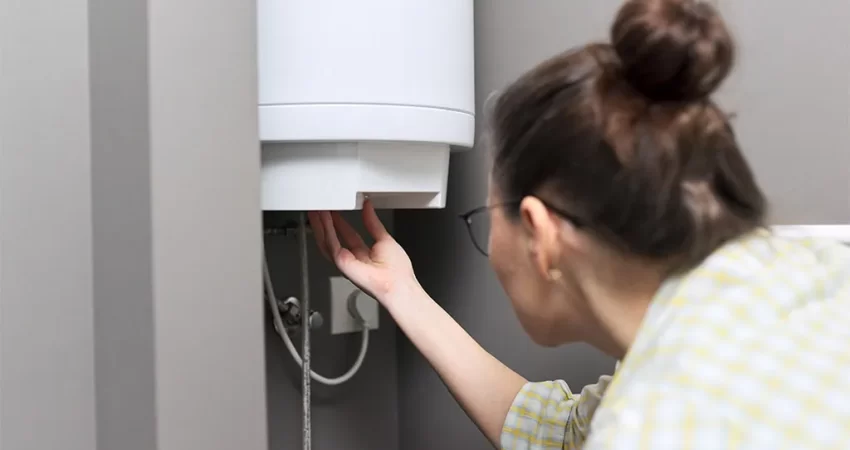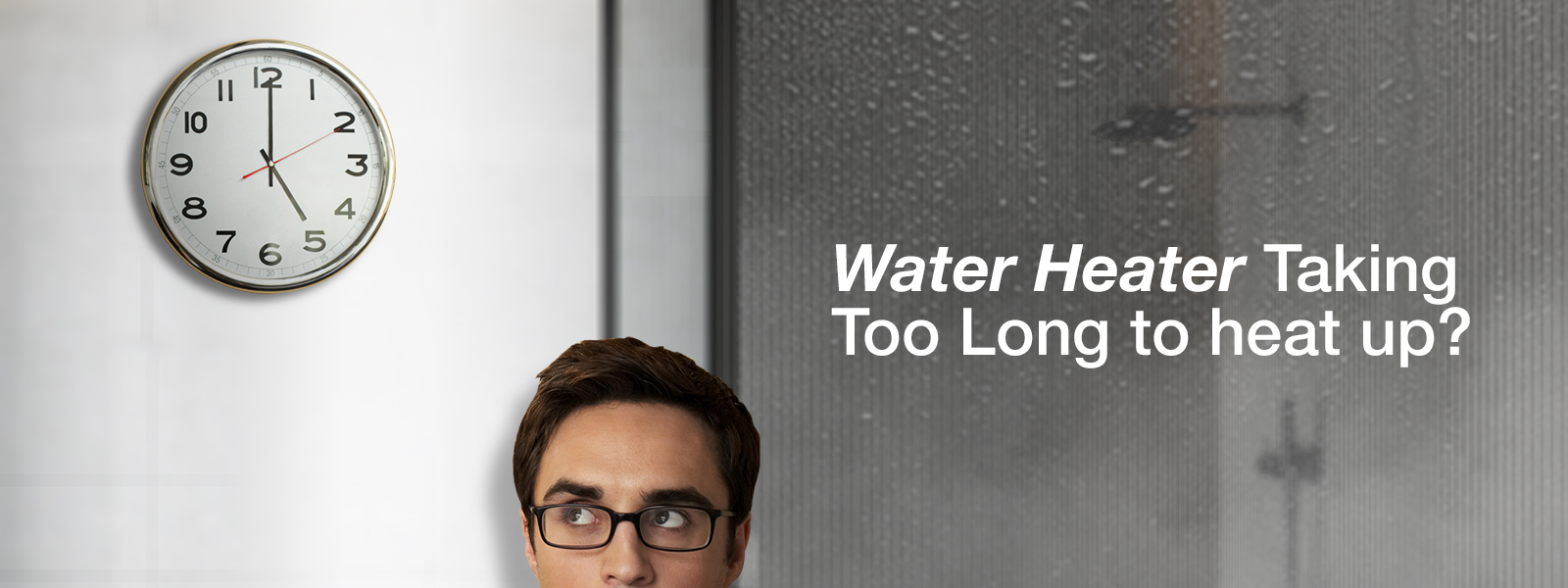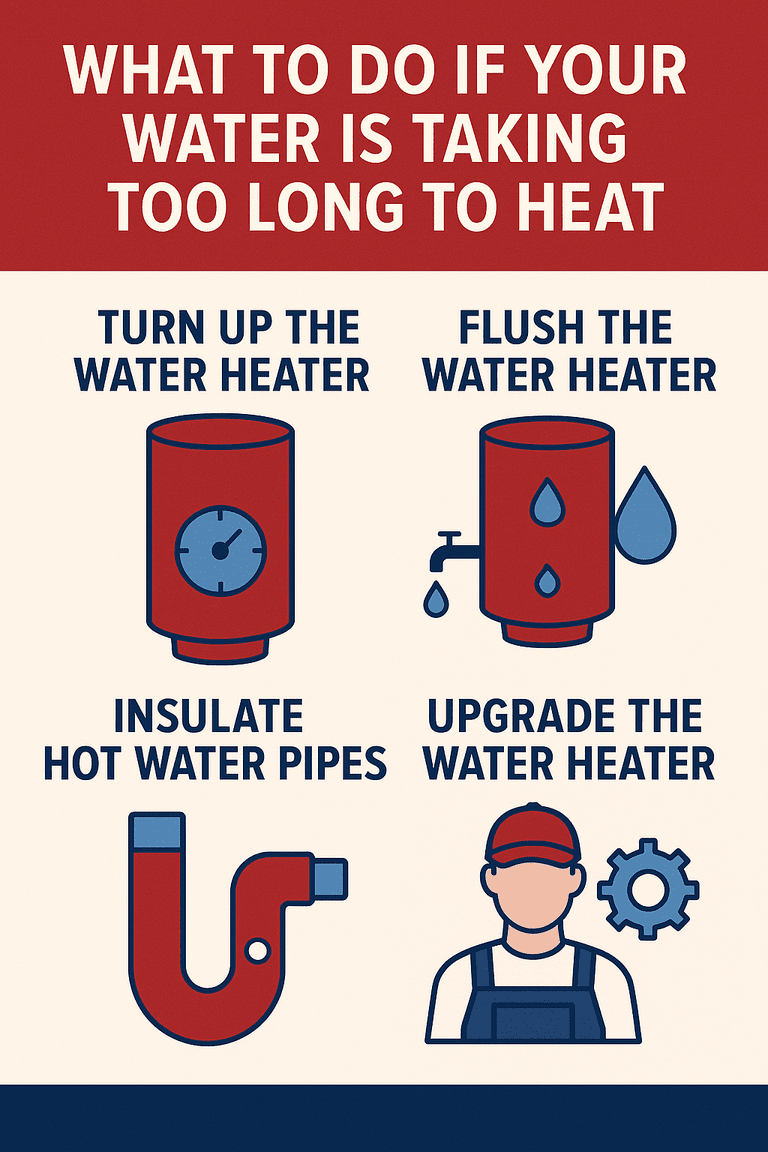Are you tired of waiting forever for your water heater to finally deliver that comforting warm water? It’s a common frustration that can disrupt your daily routine, from morning showers to dishwashing.
Your water heater, an essential household appliance, should not be a source of stress. So why is it taking so long to heat up? Imagine the relief of understanding the problem and knowing exactly what steps to take to fix it.
You’ll discover the reasons behind this common issue and learn practical solutions to get your water heater back on track. Ready to dive into a world where hot water is always on demand? Let’s uncover the secrets that will save you time and energy.
Page Contents
Common Causes
Is your water heater taking forever to heat water? This is a common issue that frustrates many homeowners. Understanding the reasons can help address the problem efficiently. Here are some typical causes that might be slowing down your water heater’s performance.
Sediment Build-up
Over time, minerals in water form sediment at the tank’s bottom. This layer acts as a barrier between the water and the heat source. The heater struggles to warm the water, causing delays. Regular maintenance can prevent sediment build-up.
Thermostat Issues
The thermostat controls the water temperature. If it’s not set correctly, the water may not heat efficiently. A faulty thermostat can also lead to inconsistent water temperatures. Checking and adjusting the thermostat can improve heating times.
Heating Element Problems
Electric water heaters use heating elements to warm water. If one or both elements fail, the heater can’t work well. This leads to longer heating times. Inspecting and replacing faulty elements can restore efficiency.
Insufficient Power Supply
Water heaters need enough power to function properly. Inadequate power supply can slow down heating. Ensure the heater is connected to the correct power source. Check for any electrical issues that might affect performance.

Credit: www.foxph.com
Sediment Removal
Is your water heater taking forever to heat up? The culprit might be sediment buildup. Sediment can accumulate at the bottom of your water heater over time, reducing its efficiency and lifespan. Removing sediment is essential for keeping your heater in top shape and ensuring you have hot water when you need it. Let’s dive into some practical steps for sediment removal.
Draining The Tank
Draining your tank is a straightforward way to remove sediment. Begin by turning off the power supply or gas to your heater. Safety first! Next, attach a garden hose to the tank’s drain valve and direct the hose to a safe drainage area. Open the valve and let the water flow out.
As the water drains, watch for sediment. You might be surprised at how much has built up. It’s a bit like cleaning out a messy drawer—sometimes you don’t realize how much clutter you’ve accumulated until you start. Repeat this process until the water runs clear.
Flushing Techniques
Once you’ve drained the tank, flushing can help remove stubborn sediment. Close the drain valve and turn the water supply back on, allowing the tank to refill. Open the valve again and let the water flow out. This rinse-and-repeat method can be more effective than simple draining.
You might find it helpful to give the tank a gentle shake during this process. It sounds odd, but a little movement can dislodge stubborn sediment. Just be careful not to damage any connections. Have you ever tried shaking a bottle to get the last bit of ketchup out? It’s a similar concept.
Removing sediment might seem like a hassle, but it’s essential for maintaining your water heater’s efficiency. Have you considered the impact sediment buildup could have on your energy bills? Addressing it now could save you money in the long run. Are you ready to take control of your water heater’s performance? Let’s get started!
Thermostat Adjustment
Is your water heater taking forever to get the water warm? The thermostat might be the culprit. Adjusting the thermostat can be a simple and effective solution to this problem. A well-calibrated thermostat ensures your water heater operates efficiently, saving you both time and energy. But how do you know if your thermostat needs adjustment? Let’s dive into the details.
Checking Temperature Settings
Start by checking the temperature settings on your water heater. It’s a straightforward task that can make a big difference. Locate the thermostat, usually found near the bottom of the tank. Ensure it’s set to the recommended temperature, typically around 120°F (49°C). Setting it too low might be the reason your water takes longer to heat.
Have you ever realized that setting the temperature too high can be equally problematic? It can lead to overheating, causing more wear and tear on your heater. So, balance is key. Adjusting the thermostat to the right temperature can optimize performance without overloading the system.
Replacing A Faulty Thermostat
If adjusting the settings doesn’t solve the issue, you might be dealing with a faulty thermostat. A broken thermostat can disrupt the heating cycle, leaving you with lukewarm water. How can you tell if it’s faulty? Look out for inconsistent temperatures or if the heater doesn’t respond to adjustments.
Replacing the thermostat might be necessary. It’s a straightforward process but requires a bit of caution. Turn off the power supply to the heater before you start. Carefully remove the old thermostat and replace it with a new one. Check if the new thermostat brings back the efficiency you need.
Have you ever tackled a DIY project like this? It’s surprisingly rewarding to see your efforts translate into a quicker hot shower. But remember, if you’re unsure about handling electrical components, consulting a professional is always a wise choice.
Would you rather endure cold showers or take action to adjust your thermostat? The choice is clear, and the solution is within your reach. Whether it’s tweaking the temperature or replacing a faulty component, you have the power to improve your water heater’s performance.
Heating Element Replacement
Experiencing a water heater taking too long to heat? It might be time to replace the heating element. This simple fix can restore efficiency and ensure hot water is available quickly.
If your water heater is taking too long to heat, a faulty heating element might be the culprit. Replacing a worn-out heating element can dramatically improve your water heater’s efficiency. This task, while seemingly daunting, can be straightforward with the right guidance and tools. Let’s dive into how you can identify and replace these elements yourself.Identifying Faulty Elements
First, determine if a faulty heating element is the root of your problem. Check for signs like lukewarm water or an unusual delay in heating. Use a multimeter to test the element’s resistance; a reading of zero or infinity indicates a problem. Make sure to turn off the power before testing to avoid any accidents. If you’re unsure about using a multimeter, consider watching a quick tutorial online. Think about the age of your water heater. Older units are more prone to element failure. Regular maintenance can help you catch these issues early.Step-by-step Replacement Guide
Gather Your Tools and Materials: – Screwdriver – Multimeter – Replacement heating element – Garden hose – Wrench 1. Turn Off Power and Water Supply: Start by cutting off the power to the water heater. Flip the circuit breaker to the “off” position. Shut off the water supply to prevent any unwanted leaks. 2. Drain the Tank: Attach a garden hose to the drain valve at the bottom of the tank. Direct the hose to a safe drainage location. Open the valve and allow the tank to empty completely. 3. Remove the Old Heating Element: Locate the access panel on the side of the heater. Remove the screws and panel to reveal the heating element. Use a wrench to unscrew and carefully remove the old element. 4. Install the New Heating Element: Insert the new heating element into the slot where the old one was removed. Ensure it is tightened securely. 5. Refill the Tank and Restore Power: Close the drain valve and remove the garden hose. Turn the water supply back on and let the tank fill. Once the tank is full, restore power by flipping the circuit breaker back to “on.” Replacing a heating element is a manageable task that can save you money. Have you ever tried fixing household items yourself? It can be rewarding to solve the problem and see the results immediately. Keep these steps handy, and your water heater will be back to optimal performance in no time. Do you have other tips or tricks for maintaining a water heater? Share your experiences in the comments!Power Supply Check
Experiencing a water heater that takes too long to heat can be frustrating. A thorough power supply check is essential. Start by ensuring the heater receives the right electrical input. This can solve heating delays and improve efficiency.
Inspecting Electrical Connections
Begin by examining the electrical connections. Loose wires can affect power flow. Check the connections are secure. Ensure there are no signs of wear or corrosion. These issues can disrupt power supply and delay heating.
Ensuring Proper Voltage
Next, verify the heater receives correct voltage. Use a multimeter for accurate readings. Incorrect voltage levels can slow heating. Consult the heater’s manual for recommended voltage. Adjust if necessary to ensure optimal performance.
Preventative Measures
Regular maintenance can prevent slow heating in water heaters. Insulating pipes helps retain heat, speeding up water warming. Flushing the tank removes sediment buildup, improving efficiency.
Dealing with a water heater that takes too long to heat can be frustrating. However, with the right preventative measures, you can ensure your water heater functions efficiently and reliably. By investing a little time in regular maintenance and setting optimal temperatures, you can extend the lifespan of your water heater and enjoy hot water whenever you need it.Regular Maintenance Tips
Regular maintenance is key to keeping your water heater running smoothly. Start by checking for any leaks or corrosion around the tank. A small leak today can become a bigger problem tomorrow. Drain your water heater tank at least once a year to remove sediment buildup. This can improve efficiency and speed up heating times. If you’ve ever dealt with a clogged pipe, you know how blockages can slow things down. Inspect the anode rod, which prevents rusting in the tank. Replace it every few years or when it becomes severely corroded. This simple step can save you from replacing your entire unit.Optimal Temperature Settings
Setting the right temperature can make a significant difference. The Department of Energy recommends setting your water heater to 120°F. This not only conserves energy but also prevents scalding risks. Consider this: Each 10°F reduction can save you 3-5% on energy costs. Are you setting your heater too high just out of habit? Adjusting the thermostat is simple. Refer to your heater’s manual, and make the change if needed. Sometimes, a small tweak can lead to big savings and faster hot water delivery. Taking these preventative measures will help ensure your water heater performs at its best. Have you ever taken the time to check your water heater? Investing a few minutes now can save you hours of frustration later.Professional Help
Experiencing a water heater that takes too long to heat can be frustrating. Sometimes, professional help is the best solution. Expert technicians can diagnose and fix issues efficiently. They have the skills and tools needed for the job. This section guides you on when to seek professional help and how to choose the right technician.
When To Call A Technician
Several signs indicate it’s time for professional assistance. If the heater makes strange noises, it’s a red flag. Persistent leaks also need immediate attention. Low water temperature after long heating is another warning sign. If resetting the heater doesn’t work, call a technician. Professional help ensures safe and effective repairs.
Choosing A Qualified Professional
Choosing the right expert is crucial for effective repairs. Check their certifications and licenses. Qualified professionals have proper training and skills. Read reviews from previous clients. They provide insights into the technician’s reliability. Ask about their experience with your heater model. Experience ensures thorough understanding of specific issues. Verify their insurance coverage. It protects you against potential liabilities during repair.

Credit: www.aosmithindia.com

Credit: lentheplumber.com
Frequently Asked Questions
Why Is My Hot Water Heater Taking So Long To Heat Up?
Sediment buildup can slow heating. Check thermostat settings. Larger tanks take longer. Old heaters may need replacement. Ensure power supply and temperature settings are correct. Insulation issues can affect heating efficiency. Regular maintenance prevents delays. Consider professional inspection for persistent problems.
How To Fix Water Taking Too Long To Get Hot?
Insulate hot water pipes to reduce heat loss. Check and adjust water heater settings for efficiency. Install a hot water recirculation pump for faster access. Regularly maintain the water heater to ensure optimal performance. Consider upgrading to a tankless water heater for instant hot water.
How Do You Fix A Long Wait For Hot Water?
Insulate your water pipes to retain heat longer. Install a recirculation pump for instant hot water. Consider upgrading to a tankless water heater for faster heating. Regularly maintain your existing heater to ensure efficiency. Adjust the thermostat to a higher setting for quicker hot water delivery.
How Long Should It Take For A 50 Gallon Water Heater To Heat Up?
A 50-gallon water heater typically takes about 1 to 2 hours to fully heat up. Gas heaters usually heat faster, taking around 1 hour, while electric heaters might take closer to 2 hours. Efficiency, temperature settings, and initial water temperature can affect heating time.
Conclusion
A slow water heater can be frustrating. Simple steps can improve performance. Regular maintenance helps ensure efficient heating. Check the thermostat settings. Lower settings cause longer heating times. Sediment buildup also affects efficiency. Flushing the tank can clear debris. Insulating pipes reduces heat loss.
Consider the heater’s age too. Older models take longer to heat water. An upgrade might be necessary. Consult a professional if problems persist. They can provide expert solutions. Remember, a well-maintained heater saves time and energy. Enjoy hot water without long waits.
